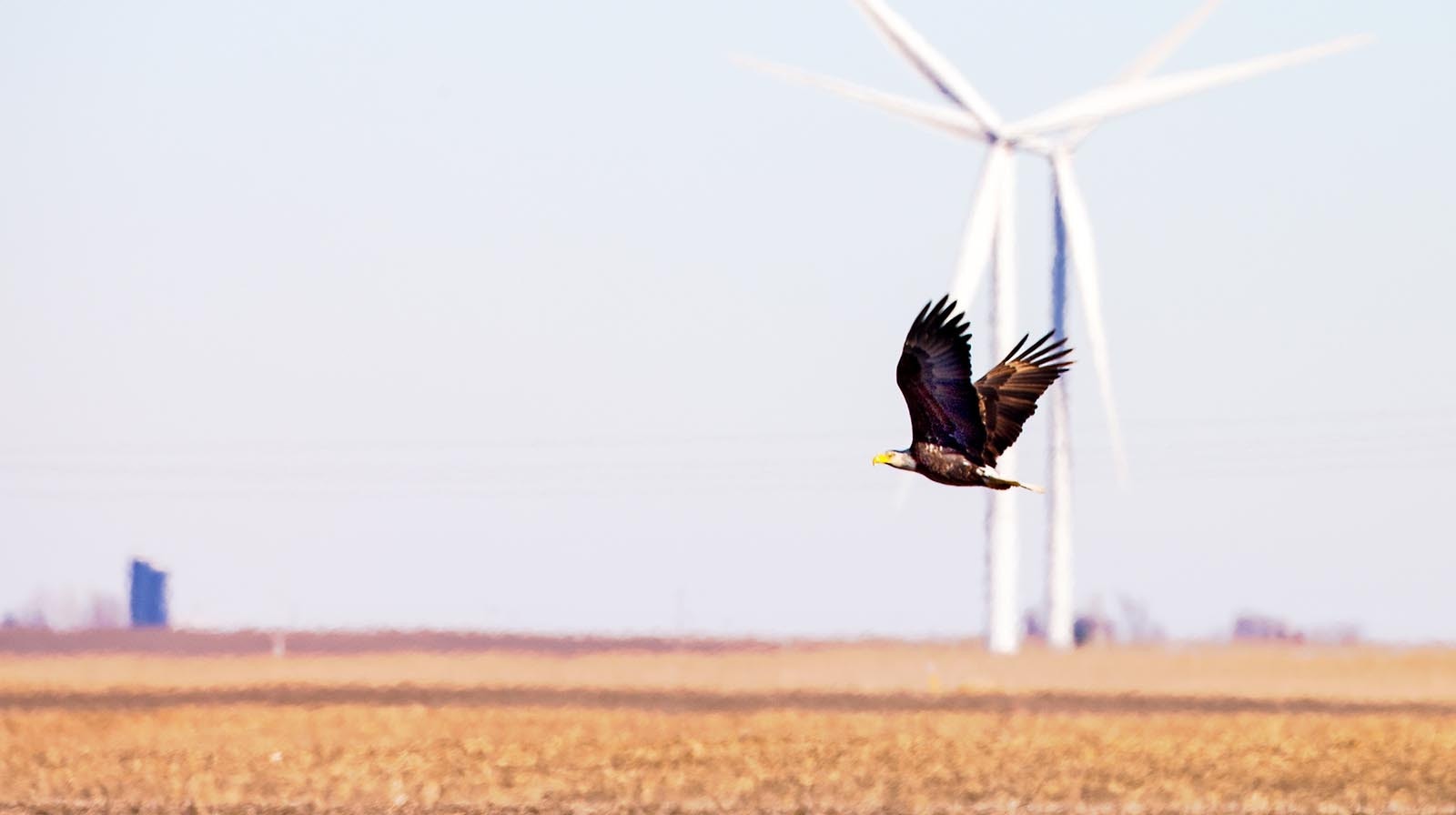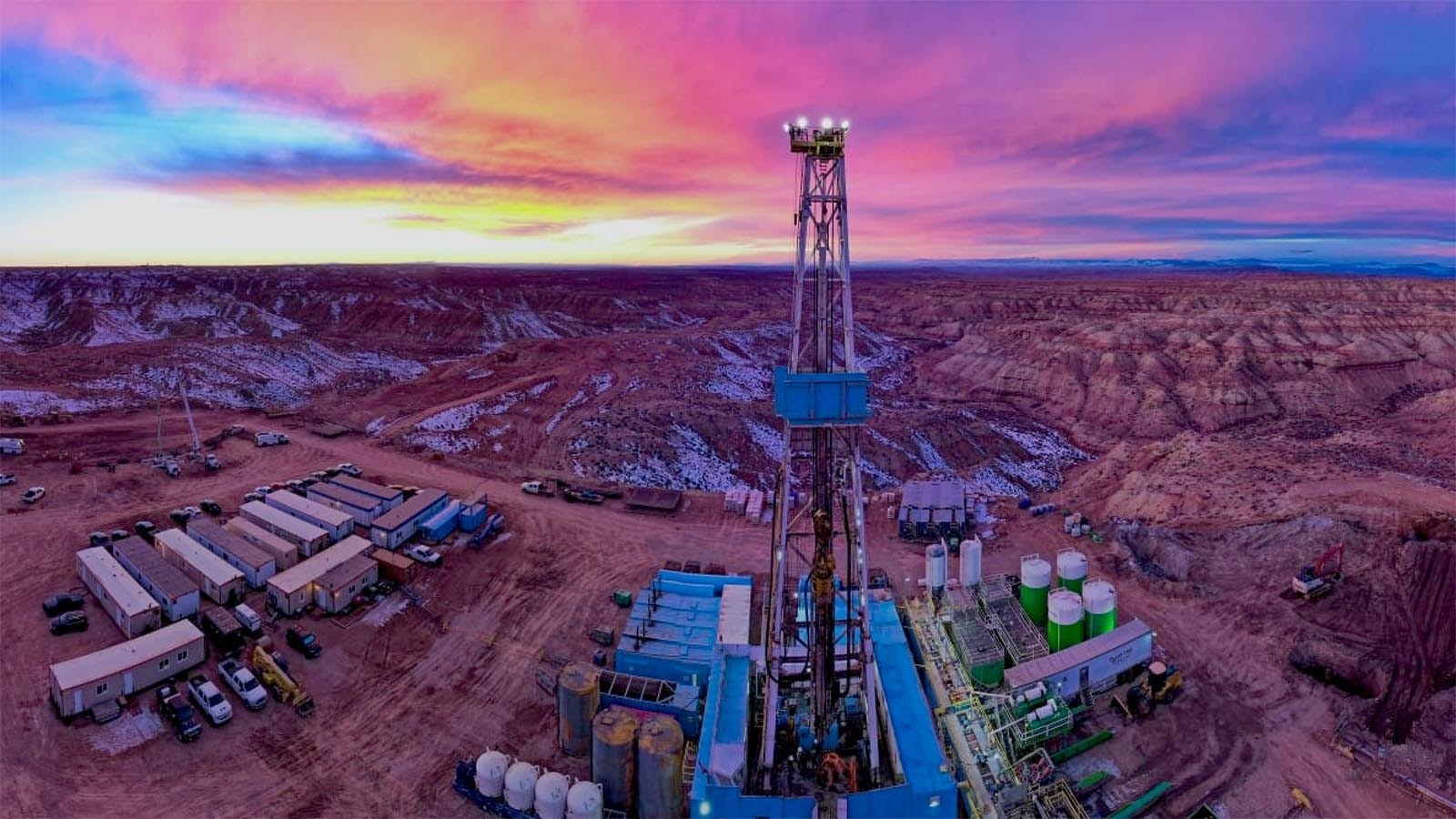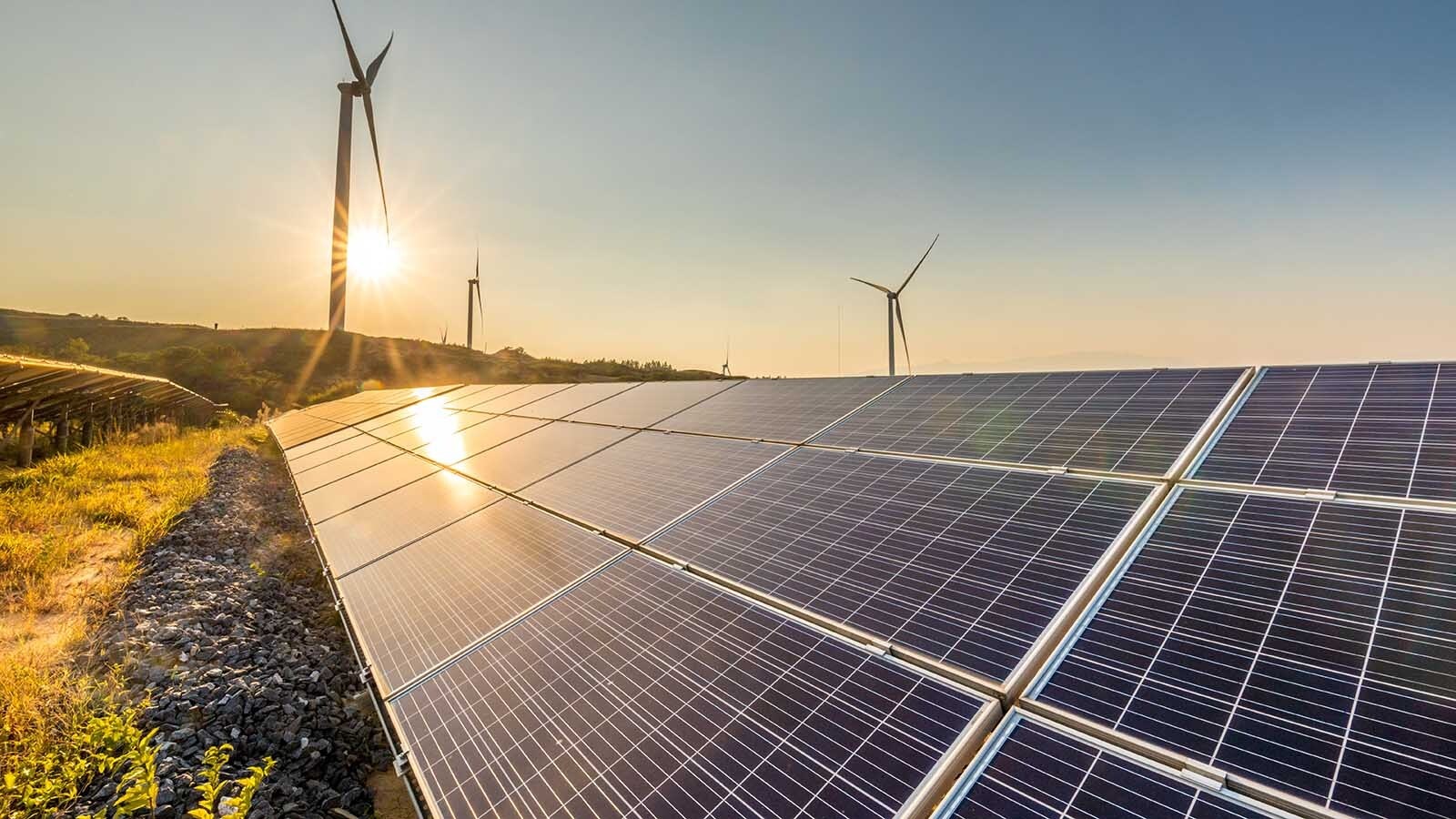The U.S. Fish and Wildlife Service is proposing changes to the way permitting for eagle deaths is handled on wind farms, transmission lines and other projects with a goal to expedite permitting while still maintaining or increasing eagle populations.
Wind farms in Wyoming have faced high-profile fines for killing eagles. In April, NextEra Energy pleaded guilty to violating the Migratory Bird Treaty Act and was ordered to pay more than $8 million. Duke Energy, which operates a few wind farms in Wyoming, was fined $1 million in 2014 for the deaths of 14 golden eagles; and PacifiCorp received $2.5 million in fines for 38 eagles killed by its turbines.
The way the federal agency now handles the permitting of eagle kills, called “takes,” is the service reviews applications for eagle take permits. If the agency issues a permit, it will include conditions specific to that project.
The proposed changes would create a faster alternative route to permitting of activities that have low impacts for eagles and well-established measures to minimize impacts by allowing authorization without site-specific analysis.
Finishing Eagles Off
Erik Molvar, executive director of the Western Watersheds Project, said that because of the eagle population in southern Wyoming, which is where most Cowboy State wind projects are sited, most Wyoming wind farms wouldn’t be eligible for the alternative permitting route — with one caveat.
“One of the unintended consequences of this general permitting process is, once the existing projects take down golden eagle numbers to the point where they’re below the thresholds, then general permits can be issued to finish them off,” Molvar said.
Molvar said the proposed changes would “be a step forward” for permitting electrical transmission lines. The general permit requires that lines be constructed in a way that prevents eagle electrocutions and has a mechanism for retrofitting existing power lines where wires are close together and electrocutions are more frequent.
He also noted that it might incentivize wind companies to site their projects outside areas of high eagle density.
Molvar called southern Wyoming one of the last eagle strongholds, and the wildlife service has said there’s no acceptable number higher than zero for golden eagle losses.
“We can’t afford to lose any more of these golden eagles even as it is, and yet the wind farms keep going up,” Molvar said.
Molvar said siting solar projects in urban areas would require less transmission and not kill eagles.
Learning Curve
Susan Ahalt, founder of Ironside Bird Rescue, said wind companies are doing a lot to mitigate impacts to eagle populations.
“They’re really conscientious about trying to save the birds,” Ahalt said.
Ironside is in Cody where there are few wind farms or eagles, but Ahalt said there’s little chance eagles colliding with turbine blades survive.
“I’ve never received a bird that was hit by a turbine,” she said. “Although I’m sure if they’re hit, they’re dead.”
The bird rescuer said that there’s a learning curve with everything, and wind energy companies are gradually learning ways to mitigate the impacts.
Duke Energy’s IdentiFlight bird detection technology is one example, she said. The system, which is installed at the company’s Top of the World wind farm in Converse County, identifies birds near wind blades, calculates their flight path and can stop the wind turbines to prevent a collision. A study published in the Journal of Applied Ecology found that eagle deaths decreased 85% at Top of the World after the system was installed.
“The system uses AI [artificial intelligence] and therefore gets smarter the more images it collects. Additionally, the technology has improved since the study was conducted,” said Shelley Vierra, marketing a business development for Boulder Imaging and IdentiFlight.
David Eskelsen, spokesperson for PacifiCorp, said the company also is incorporating the technology into its wind projects and will shut down individual turbines as needed.
Before the company sites a wind project, Eskelsen said it collects a large amount of data on avian wildlife in the wind farm location, as well as other wildlife. Species behavior can change over time, so after the wind farm is operating, they have staff of wildlife biologists that help manage wildlife impacts.
“One of the things particularly with the raptors is they move according to prey species,” Eskelsen said. “So, we have to be cognizant of those natural tendencies. So an area that may not be active in one season.”
Key Responsibility
According to the Sierra Club, about one million birds are killed by wind turbines every year, but the organization notes that transmission lines, windows, communication towers, and cats kill far more.
Once endangered, the populations of bald eagles have increased four-fold since 2009. There are now about 350,000 of the birds in the U.S. populations of bald eagles. On the other hand, there are about 40,000 golden eagles in the U.S., and the species requires a much larger area to survive.
The service said the proposed changes to eagle take permitting won’t undermine its commitment to conservation of the species.
“Preservation of bald and golden eagles is a key responsibility for the service,” said U.S. Fish and Wildlife Service Director Martha Williams in a press release about the proposed changes.
Williams said the agency will continue to collaborate with the public to conserve bald and golden eagles while creating more pathways for companies to obtain permits.
The proposed rule has a 60-day public comment period that runs through Nov. 29.





